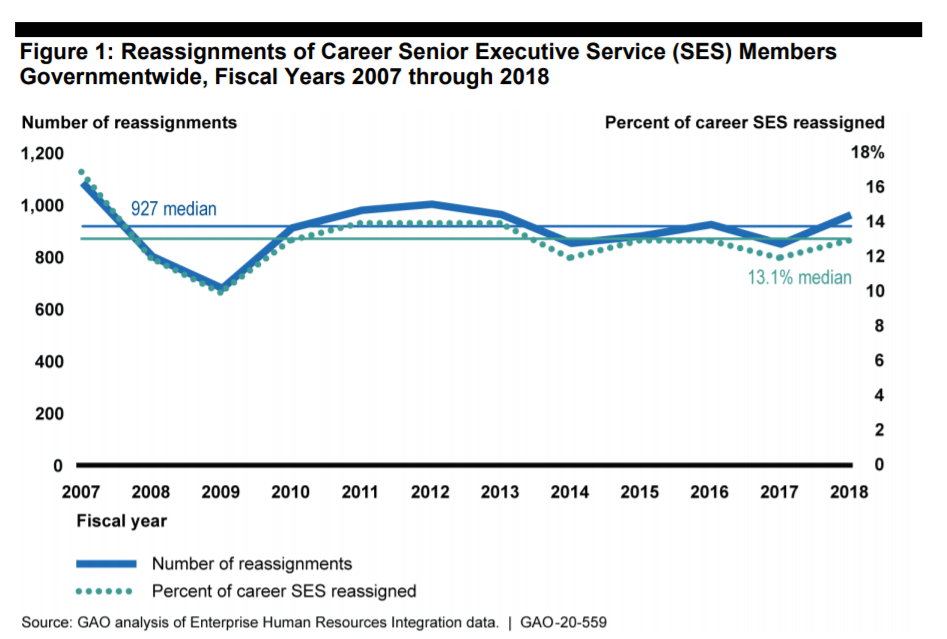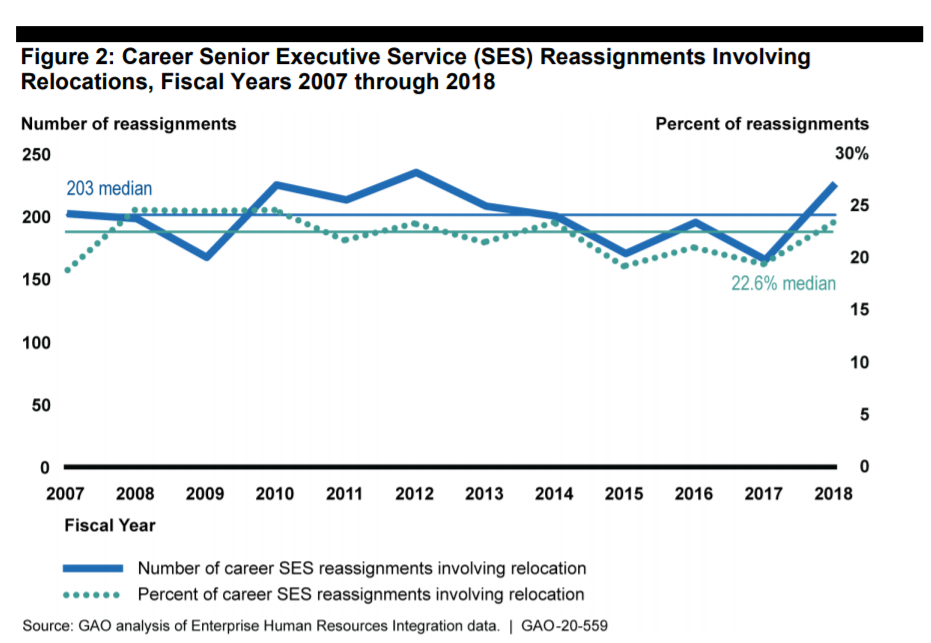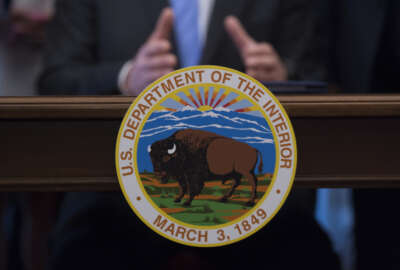
SES reassignments could use more oversight, GAO says
Agencies are often reassigning members of the Senior Executive Service with little oversight, the Government Accountability Office found. And the Office of...
Agency practices for reassigning members of the Senior Executive Service to new positions are all over the map — and often lack oversight, the Government Accountability Office said in a recent report.
In general, departments can’t involuntarily reassign SES members within 120 days of a new agency head or an executive’s new, non-career supervisor coming on board.
But agencies occasionally break the moratoriums anyway, GAO found, and they often lack the rationale or documentation to explain their decisions.
The Office of Personnel Management, which has the statutory authority to oversee SES reassignments and crack down on agencies when they fail to implement them properly, told GAO enforcement wasn’t a major priority.
“While OPM receives information about the number and frequency of SES reassignments at each agency, we found that OPM did not use its oversight authority to monitor agency reassignment activity to ensure agencies met requirements for making SES reassignments,” GAO said.
OPM acknowledged it did have the authority to direct agencies to take corrective action on SES reassignments, but it doesn’t plan on stepping up its oversight.
“Agencies remain primarily responsible for following the statutes and regulations governing the SES,” Dennis Kirk, OPM’s associate director of employees, said in response to GAO’s recommendations. “Thus, although OPM could use its authority to require the agency to take corrective action should it become aware of a violation of regulation or statute, it has chosen not to make reassignments a focus of its enforcement efforts, in light of the scarce resources available to OPM and the many mandates OPM is required to meet. We rely [on] agencies to comply with the provisions governing reassignments as we prioritize other work.”
For the Senior Executives Association, the response from OPM is telling.
“Their response reinforces serious questions about how OPM is enforcing and overseeing merit principles and achieving its core statutory functions,” said Jason Briefel, SEA’s executive director.
According to GAO, agencies made a median of 927 SES reassignments annually between 2007 and 2018. Reassignments occurred less frequently during some years, especially when presidential transitions occur and agencies are trying to preserve the 120-day moratoriums.

Of the SES reassignments, less than a quarter, or 22.6%, involved a geographic relocation, GAO said. Relocation-reassignments appeared to dip slightly during the middle of the Obama administration and then jumped between 2017 and 2018.
SES reassignments with geographic relocations occurred most often at the Department of Veterans Affairs, with 39% of their reassignments involving a physical move. The Defense, Justice and Interior Departments also moved a fair share of their senior executives, with 34% of their reassignments involving a geographic relocation, GAO said.

GAO reviewed four agencies’ procedures for reassigning senior executives. All four agencies made SES reassignments during at least one of the two, 120-day moratoriums for new agency heads or new non-career direct supervisors, with the Energy Department moving the most executives.
Agencies broke the typical moratorium for a variety of reasons. In some cases, the executives requested a reassignment for personal or professional reasons, GAO said. In other situations, mission requirements prompted the agency to break the usual moratorium and reassign certain executives.
“At Energy, in 2018 and 2019, all career SES positions were evaluated based on the complexity and scope of work, breadth of responsibility, span of control and impact to mission accomplishment,” the GAO report reads. “We found that, as a result of its review, Energy determined that some SES positions no longer supported an SES designation and were identified to be abolished when the position was vacant following reassignment, including some of those within the scope of our review.”

Many agencies described standard processes and procedures for reassigning SES members. Commerce, for example, assembles a reassignment package that explains why the move is necessary and how it will help the department’s mission. Energy develops a similar business case.
But all four of the agencies under GAO’s review were missing at least some documentation to prove SES members had voluntarily agreed to reassignments made during one of the two moratoriums.
In the case of the Department of Housing and Urban Development, it initially didn’t know whether it had made SES reassignments during the new non-career supervisor moratorium until GAO asked. HUD eventually discovered that it did and has since committed to a new process for making certain SES reassignments.
GAO’s report stems from a request made by a bicameral group of lawmakers on congressional oversight and energy and natural resources committees, who sought data after the Interior Department reassigned 35 senior executives three years ago.
The reassignments baffled the executives who were impacted, and the department’s inspector general couldn’t determine the reasons behind the mandatory moves either, mostly because Interior didn’t document its decisions.
The Interior Department, GAO said, has made some improvements to make the decision-making process behind its SES reassignments more transparent. The department, for example, requires documentation to prove the reassignments were discussed with SES members, as well as a description of why the executive’s individual expertise and skillsets relate to the new position.
“They do appear to have made improvements and changes to strengthen their policies and oversight,” Briefel said of Interior’s SES reassignment process. “But it’s unfortunate that those improved practices haven’t been shared more broadly.”
Copyright © 2025 Federal News Network. All rights reserved. This website is not intended for users located within the European Economic Area.
Nicole Ogrysko is a reporter for Federal News Network focusing on the federal workforce and federal pay and benefits.
Follow @nogryskoWFED





